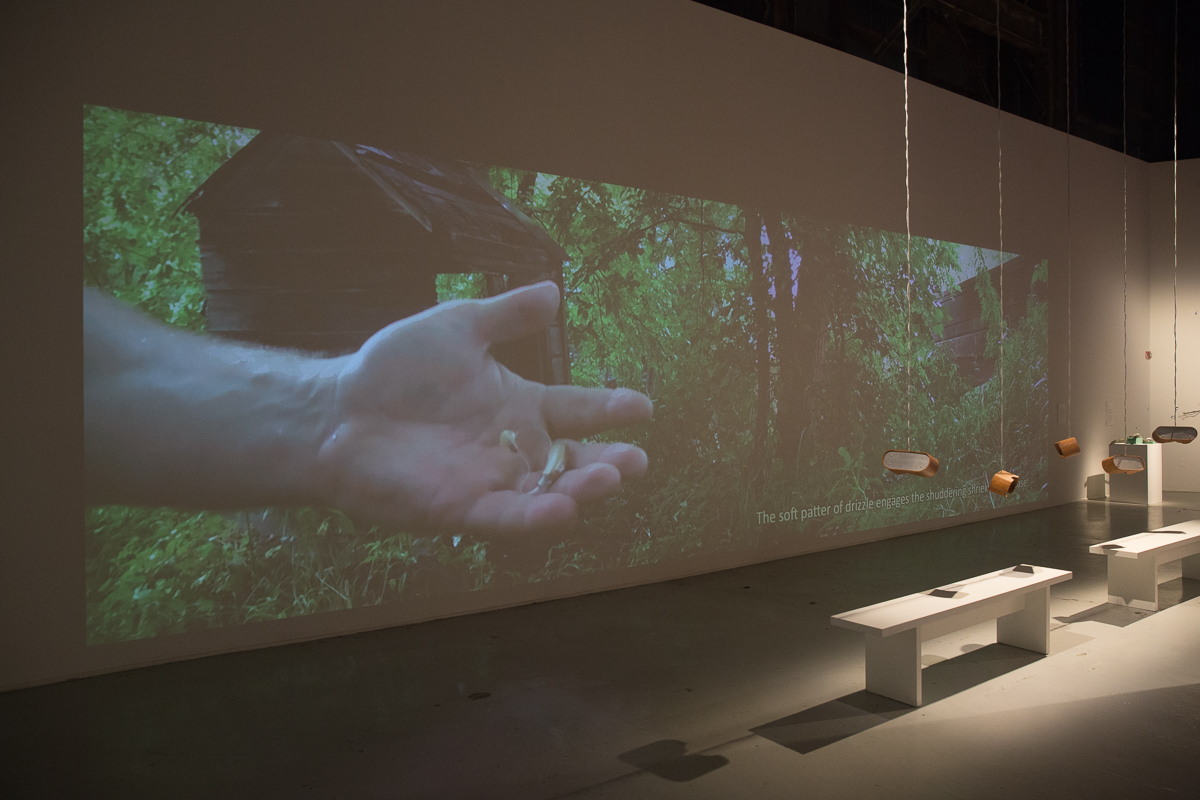CripTech
Natural Environments & Living Systems

Darrin Martin's "Ancestral Song." A large video projects against the length of a white wall, showing a man's hand outstretched, holding a hearing aid in his palm. A leafy-green forest forms the backdrop, and on the lower right side of the projection are yellow subtitles that read, "The soft patter of the drizzle engages the shuddering shriek." Two white benches sit in the foreground, and several bespoke wood and metal stereoscopic viewers dangle down from the ceiling directly above.
In this section of the exhibition, artists explore the interconnection between animals, land and humans in a world that is interminably altered by cycles of activity and change, degradation and renewal. These immersive works span large-scale, interactive audiovisual and haptic installations, to photographic prints. They invite visitors to experience new possibilities for perceptual engagements that emerge when disabled bodyminds and their prosthetic technologies encounter natural spaces and living systems. Artists develop a crip eco-consciousness that materializes the radical interconnectedness of living things, collapsing binary categories such as natural and artifice, local and global, human and non-human.
Allison Leigh Holt’s A Living Model of Hyberbolic Space, a bio-sculpture installation, introduces neurodivergent sense perception. Playing with parabolic curves and scale, Holt’s piece magnifies the miniscule and refractive properties of water and Parmotrema lichen to stage new ways of knowing and seeing. Ancestral Songs, a multimedia installation with 3-D stereoscopic viewers by Darrin Martin, inverts the shrill feedback emitted by hearing aids worn by the deaf and hard of hearing into a sonic experience akin to a natural cacophony of landscapes and animal life. Jennifer Justice’s interactive installation The foot knows the foot when it touches the earth animates the impact of human encroachment on healthy ecosystems. Tactile tranducers transmit sound and vibration of animal stampedes and human clog dancing, creating a living installation of moss, 3D printed animal tracks and dirt that physically registers these seismic changes. Pete Eckert’s Forest Ballet series masterfully draws on light painting techniques used by blind photographers to illuminate majestic California Redwoods, conjuring the unseen, yet deeply-rooted spiritualism of these ancient groves.